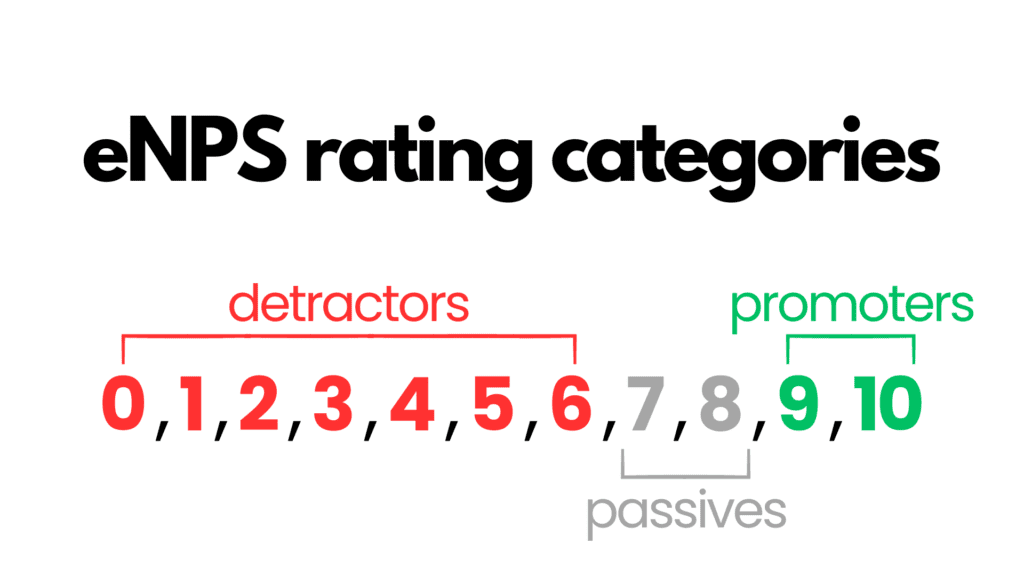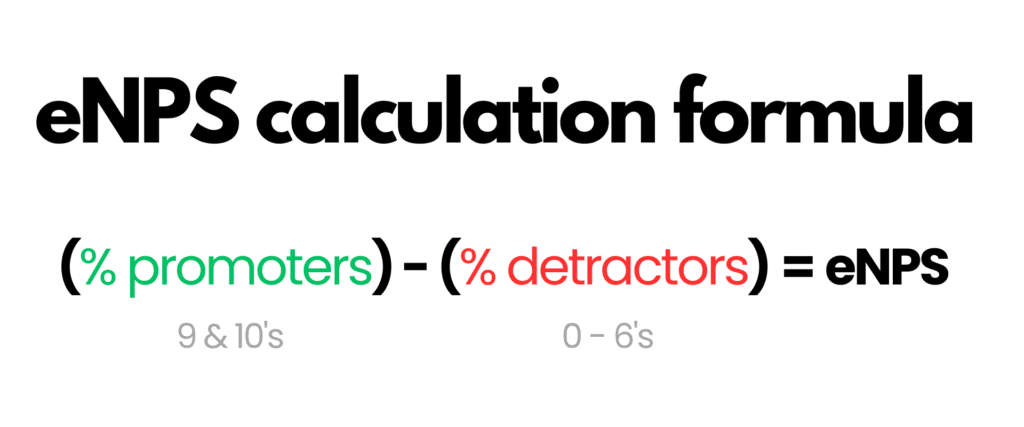Do people like you? Hopefully they do on an individual level. But if you’re an individual and not a business, the question doesn’t always impact your bottom line. If you run a business, it does matter what people think of you, particularly your employees.
Less than two-thirds of employees report being satisfied with where they work. And when employees aren’t satisfied, it can lead to all sorts of problems:
- Lack of employee engagement: Statistics suggest that more engaged employees can improve productivity by as much as 21%—or an extra day’s worth of work every week.
- Higher employee turnover: If your priority is to inspire employee loyalty, you’ll need to know they like working for you. Otherwise, they might have one eye on your projects—and the other on their resume as they send it out on job application sites.
- Poor reputation: If employees aren’t happy, you might not think that shows up on a balance sheet. But the poorer your reputation is, the harder you’ll find it to acquire top talent, which puts you at a disadvantage no matter what your industry is.
Put it all together and you’ll realize one thing: you need employees to like you. But what does this word “like” mean, and is there even a way to measure it?
One measurement you can use is an eNPS, or employee Net Promoter Score.

Definition of eNPS (employee Net Promoter Score)
Your eNPS, or employee Net Promoter Score, is a metric you’ll use to track the satisfaction and engagement of the employees in your business or organization. The secret to the net promoter score is to take a highly subjective measurement—your reputation—and turn it into something you can measure. That’s where the “score” comes into play. In an eNPS survey, you’ll ask people a 0-10 scale question.
This is similar to the NPS (net promoter score) survey that companies will often send to their customers, asking how likely they are to recommend their brand to the customers’ friends or family. That survey is focused on customer satisfaction and customer experience as a way to gauge customer loyalty among other things – while the eNPS survey is focused on employee satisfaction and employee experience. These are high level surveys which are usually a good place to start for most organizations as they strive to improve customer and employee experience.
Background of eNPS/NPS
The NPS score was first introduced in 2003 by Fred Reichheld, and has been a game changed for companies ever since. It’s objective was to create a simple standardized metric companies could track to measure employee loyalty over time. While it’s just a one question survey at its core, both NPS and eNPS surveys make use of an open ended text field question to gain deeper insights to support and validate the single question survey score.
An example eNPS question looks like this:
On a scale of 0-10, how likely are you to recommend [this company] as a place to work?
Scoring eNPS Results
The answers you get will be very telling. eNPS will categorize each answer into one of three groups:

- Promoters are people who answer 9 or 10. They’re satisfied, and more than that. They’re also the people most likely to recommend your company to someone else. Hence the term promoters: these are the people so thrilled with working at your company that they’ll try to get friends and contacts to work there, too.
- Passives will likely answer 7-8, which means they’re largely satisfied. But they may not be so enthusiastic that they rave about you to others. So these are not active promoters, but they’re also respondents who won’t actively hurt your reputation. You might also consider these to be “neutral” for the purposes of a “promoter” score.
- Detractors are the real danger zone at scores 0-6. They have beef with you as an employer. They aren’t only more likely to leave the company, but they’re more likely to say bad things about their experience working for you. This puts them on the opposite spectrum of the promoters: these are those who will actively harm your reputation.
Calculating eNPS Scores
Your overall eNPS is calculated by subtracting the percentage of your detractors from the percentage of promoters—with passives being neutral and not factoring into the equation.
eNPS Formula
(% promoters) – (% detractors) = eNPS

eNPS Scale
Your actual score for an eNPS survey can range from +100 to -100.
Example eNPS Results, Formula, and Scoring
Example Company has 327 employees and 100% of them complete the eNPS survey (…wouldn’t that be nice?).
- 141 employees rated a 9 or 10 (43%)
- 63 employees rated a 7 or 8 (20%)
- 123 employees rated between a 0 or 6 (37%)
The equation is % of promoters – % of detractors = result
So your equation would look like this: 43% – 37% = 6%
Your eNPS score would be a 6.
How to Use eNPS to Improve Your Reputation and Employee Engagement
Fortunately, the eNPS surveys you take will be more than raw numbers. They’ll also include qualitative data. You’ll ask questions about your company as an employer, how you can improve the state of working at your company, and other helpful information that employees can provide you.
Your first step should be to analyze your feedback. You’ll want to organize your feedback into the three categories listed above to accomplish this.
Here’s an example: maybe you can take all of the qualitative data you received and organize it by category. Maybe a frequent answer to your surveys is that employees say you should give them more time off. You might then include “more time off” as a category of qualitative feedback, counting how many times people responded from each category.
If “more time off” was a common complaint of your passives category, but not a top complaint of people in your detractors category, then you’ve successfully cross-referenced your data. You discovered that even though “more time off” was a common complaint, it didn’t appear to be critical to forcing people into detractor status.
If, on the other hand, your detractors did provide this answer frequently, you know that it’s become a hinge point for people at your company.
Here are a few other strategies like feedback analysis you can use to make sense of your eNPS results:
- Segmenting your results. Ever heard of customer segmentation? It’s the act of organizing your customers by demographics, desires, or marketing funnels. This allows you to personalize your marketing materials to a specific group of people with specifi wants and needs. Do the same with your eNPS results. Break them down into departments, teams, or locations to identify key pain points you can address.
- Finding benchmarks for context. Research some eNPS industry benchmarks to get the proper context for your results. For example, a +75 score sounds very bad because on a report card, a 75% was a C-average. But if you find that the industry average is +35%, it puts your score in a completely different context—you’re actually outperforming with a solid reputation.
- Track changes over time. It’s tempting to view eNPS surveys as a one-time thing. But if you perform them over time, you add a new dimension to your measurement. As the old saying in business goes: “What gets measured gets managed.” And if you only measure your eNPS once, you have no context for whether you’re improving, stagnating, or even getting worse over time.

8 Tips for Starting eNPS Surveys at Your Company
Before you send your first survey, there’s a bit you may want to consider to get things in order internally:
- Getting Buy-In from Leadership
- In order to have support for sending the survey as well as taking action on any follow up items, it’s a great idea to gain support for this up front from senior leadership, whether that is within HR, the C-suite, or the founder.
- Understanding Industry Benchmarks
- In order to set expectations and understand how you measure up, it’s helpful to get an idea of the industry benchmark for eNPS scores in your industry which you can view here.
- Setting Expectations Internally
- Between leadership, technical teams, employees – it’s helpful to let people know what to expect, when to expect it, and why it matters to both them and the business itself.
- Selecting the Right Tool
- Find the tool that works best for your organization, whether anonymity is important (it usually is from the employee perspective), if there are data privacy concerns, if you can get white-labeling (or if it matters), if you can easily integrate your list of employees from other tools you use if that is important to you, and how easily you can view, segment, and assess your results.
- Ensuring Technology is All Set
- Make sure you whitelist the domain or email address that surveys send from for your employees’ email accounts so that things don’t wind up in spam filters.
- Review Survey Settings
- Check reminder email settings, naming, email lists, and core functionality if possible before you schedule or hit send.
- Communicating to Your Team Members
- Before you send the email, it’s best practice to communicate internally to all of your staff that an email will be coming, from who, what the request is for them to do, and why it matters. It can be helpful to communicate your future action plan up front to team members as well both for transparency, as well as to help keep yourself accountable to the next steps.
- Prepping Your Post-Survey Actions
- Develop your post-survey action plan before you press send. Schedule time to review results, determine if you plan to communicate things to managers, leadership, etc. Determine how frequently you will take action to improve findings from the survey, if you will communicate to the team on regular intervals
Leverage employee feedback in your HR strategy
Get detailed insights and AI-powered recommendations with eNPS surveys and employee surveys sent through Peoplelytics.
5 Best Practices for eNPS Surveys
The quality of your answers will depend on the quality of your questions. And since not every eNPS survey is made alike, you’ll want to know a few things about eNPS survey best practices.
- Explain the purpose of each survey. Before you send out an eNPS, make sure that you properly take some time to explain what it’s there to accomplish. Help employees understand that their answers could affect how you manage your business and their engagement. Let them know that honesty and clarity are key if you’re going to make meaningful changes to how it is to work at your company.
- Make sure every response is anonymous. Anonymous responses help ensure honesty and accuracy. It wouldn’t make for an accurate eNPS if the boss was standing over every employee’s shoulder while they filled them out. The employees would be far less likely to give honest, accurate accounting of what it’s really like to work at the company.
- Choose a proper frequency. Your eNPS surveys need to be regular, but not so frequent that they lose meaning. Quarterly or semi-annual surveys tend to be the most popular. These ensure that eNPS surveys are a regular part of the way you measure your business, but aren’t happening to your employees so often that they lose all meaning.
- A recent conversation with 11 HR managers in the US found that 45% of companies were running eNPS surveys quarterly, 36% were running them twice per year, and 18% were running only 1 survey per year. To add further context, most of the companies running surveys quarterly felt they did not get enough time to take action or truly dig in, and were considering either running them only twice per year or running just an eNPS question/pulse check 2x per year, and their full survey 2x per year.
- Look for actionable insights. Sometimes, employees will report things about your company that are true of every company. While it’s noble that you want to squeeze every ounce of insight as you can from these surveys, you can’t always make everyone happy. Look for the actionable insights—the feedback with immediate changes that you know you can put into effect as soon as possible.
- Involve employees with your improvement processes. The whole point of eNPS surveys? Getting employees to feel more engaged with your company. And they’re not going to feel engaged if they only see your surveys—and never see the solutions you implement. So don’t be afraid to involve them with those solutions. This will show them that you’re serious about taking their feedback into effect. And when they work on the solutions themselves, they’re able to contribute to them and put their own spin on how your company can improve its engagement.
4 Benefits of eNPS Surveys
It sounds like a lot of work. And maybe you’re not afraid to roll up your sleeves: you just want to know that you’re going to see some return on your investment in employee engagement. Let’s explore some of the key benefits of using eNPS surveys and implementing the changes in a way we’ve been discussing today.
Benefit #1: Measuring the Unmeasurable
In business, you can get used to focusing on the quantifiable. Profits and loss, marketing and ad spend, social media engagement, sales and conversions. But when you focus only on what’s easy to measure, you can sometimes lose sight of the sentiments that are a little more difficult to put into black-and-white terms.
eNPS surveys offer an alternative. They take something that feels opaque and abstract—employee sentiment—and turn them into quantifiable data. You’ll receive a plus-or-minus grade along with a specific number that accurately reflects how many of your employees are engaged and ready to recommend your company to others. In addition to those numbers, you’ll have more subjective feedback, which will help you identify your strengths and weaknesses.
Benefit #2: Identifying Weak Points for Improvement
eNPS scores have a way of taking away subjective opinions and giving you action items in plain print. Maybe you’ve unconsciously “felt” that there was a weak point in your company that needed improvement. It may only be when the eNPS scores come back that you realize this same point should be your highest priority.
This also helps you prioritize your next steps once you have your scores. Consider that only about 23% of employees feel truly engaged at work on a global scale. That leaves a lot of employees feeling distracted, unmotivated, or simply too out of the loop to make meaningful contributions.
eNPS surveys do more than simply identify the overall sentiment at your business. They’ll help you identify why that sentiment exists.
Benefit #3: Talent Retention
If you’re building a business, hiring great talent is the best way to ensure your company succeeds. But don’t forget about another benefit: keeping the talent already on your team. After all, if you hire great talent but instantly lose that talent to your competition, you haven’t really built anything that lasts.
Consider that 25% of millennials are active job hoppers. Even if you do a good job of making your workplace an engaging place to be, that still leaves a huge section of your talent who may be looking for the next best thing. Investing in eNPS surveys is like investing in your talent retention. You’ll find out what you’re doing as a company to drive the talent away—and more importantly, you’ll learn how you can avoid those mistakes. You’ll spend less money recruiting and onboarding new talent and more money rewarding the talent that’s busy achieving things in your company.
Benefit #4: Improving Your Executive Decision-Making
Executives who have been in the leadership role a while know how hard it is to make decisions without sufficient information. You might even call them guesses. No business should build its strategy on guesswork. To do so can mean that every new campaign you undertake can mean a lot of money spent—and wasted—focusing on the wrong thing.
eNPS surveys will provide you with a roadmap to improving your employee engagement. This will not only help you make better and more accurate decisions, but it will give you confidence that once you implement these changes, you should expect results. Track your eNPS over time for more accurate glimpses into how your efforts are being rewarded with more talent retention and higher employee satisfaction ratings.
What Companies Offer eNPS Survey Software?
“Enough,” you might say. “I’m convinced. Now, how do I implement it?” In a word, software. Just as eNPS turns a complex issue into something you can measure, there are software solutions out there that can help you turn a complex eNPS process into something easy to manage. Let’s explore a few of the options.
- Peoplelytics: we’re proud to offer an enhanced eNPS survey through our newly designed tool. While offering the standard eNPS survey question and the open ended text question, we also provide a simple rating system for team members to easily rate areas of the business or aspects of culture in a simple and easy manner.
- Qualtrics: This UK-based company helps you discover whether your employees are acting as brand representatives or not, asking that critical question: how likely are they to recommend your company to a colleague? You can also use Qualtrics to run all sorts of surveys for your company: for human resources, for customer care, or simply to give your company more insights as you learn what makes your business tick.
- CultureMonkey: CultureMonkey’s eNPS surveys will do the standard employee loyalty and satisfaction surveys. They’ll also provide a single source of truth for obtaining both quantitative and qualitative feedback. This makes it easier to track your results over time—you can handle everything easily within the software. You can also custom-create surveys and add eNPS features to those surveys, which means you won’t be limited to running the predictable employee surveys.
- Lattice: Lattice doesn’t only run the surveys, but offers you an effective, easy-to-read dashboard so you can view your eNPS results at a glance. You can use Lattice’s filtration system to browse the sentiment as well, getting a sense of where the real problems in your employee sentiment may lie.
- Culture Amp: Offering a suite of employee engagement features and tools, Culture Amp is a great piece of software for any company that wants to invest in company culture as a whole. Yes, you’ll get the ability to run surveys and monitor feedback, but you can also use it as an HR platform for measuring your employee engagement throughout the year.

6 Strategies to Boost Low eNPS Scores
Maybe you’ve run the survey, and came to one conclusion: this eNPS thing wasn’t as fun as you thought. The results are showing you’re in the negative score territory and that most of the respondents are detractors, not promoters. How are you going to get higher scores?
First step? Don’t fret. The reason you’re monitoring these scores is to tackle this unpleasant truth in the first place. But you will need some strategies to boost your low ENPS scores and make your workplace a more engaging place to be.
Strategy #1: Look for Root Causes First
When you identify a problem with your employee engagement numbers, the first temptation is to jump on it quickly. You may even look at ways to superficially deal with the problem—maybe by buying employee satisfaction with bonuses and rewards.
But if something is causing employees to feel left out or not engaged at work, you’ll have far more long-lasting results if you can address those first. Try to identify problematic areas where most of your detractors are. Then conduct more in-depth analysis and feedback sessions with them. Ask them: what are the specific reasons they’re feeling this way? What are the underlying problems that you haven’t addressed?
Remove the problem creating the lack of engagement in the first place. Then you’ll be in a far better position to address the challenges.
Strategy #2: Create Incentives to Improve Cooperation and Engagement
A common problem employees have? Feeling like cogs in the machine. They don’t feel like their contributions are particularly valued—or that they have a major effect on the company. And while you don’t want to paper over any deep-rooted issues by offering meaningless incentives, you do want to create incentives that provide meaning in your employees’ work.
For starters, it helps if employees feel better about their contributions because those contributions have an effect on the company’s results. And one key element to that is social acknowledgment. According to one study, 83% of respondents felt recognition for contributions was more fulfilling than rewards or gifts, which tend to feel impersonal.
That means your incentives should engage with employees as well. Create recognition awards. Make sure the people receiving those awards get the social recognition they deserve with team-wide announcements and visual reminders of their accomplishments. And to ensure that those rewards are associated with employee engagement, always make sure there are specific, spelled-out reasons the employee is receiving the award.
Strategy #3: Team-Building Activities (Even for Remote Teams)
True: team-building activities at the workplace don’t always have the best reputation. Some employees can feel like they’re only doing it out of duty, and that the activities don’t really build the camaraderie that leadership is hoping for.
But team-building for its own sake does move the needle. 75% of staff say teamwork and collaboration are keys to corporate success, after all. And during the COVID-19 pandemic, 2,500% more companies started using virtual team building approaches, which can feel less invasive while still helping improve communication and the sense of teamwork—even in remote teams.
After all, employee engagement is often a social measurement. Employees feel engaged when they’re part of a community—something larger than themselves. And if they’re able to provide key input into that community, they feel attached to what that community can achieve. The more you can shift your teams into non-work contexts, the more you can get them feeling like they’re making genuine connections. And this will show up in your employees’ satisfaction ratings.
Strategy #4: Communicate Your Progress
Employees can sometimes feel at odds with leadership, especially if leadership cuts employees out of the loop. For instance, imagine that you launched a new team-building initiative thanks to strategy #3, but you never expressed your goals for the team-building activities. Without these goals communicated to employees, they may feel like they’re being pushed around—asked to perform tasks without given any sense as to what it’s supposed to achieve.
That’s why you should involve your employees in your employee engagement initiatives. Earlier on, we mentioned that your surveys should explain exactly what they’re trying to gauge. This helps employees make honest and accurate responses in their surveys. The same principle is at work here. If you explain how and why you plan on improving employee engagement, you can involve your employees in the results.
Strategy #5: Train!
Sometimes, employees want to feel like they know how to help. But then the feedback comes back from leadership, and employees feel they need help. They want to contribute and they want to be recognized for their hard work, but they aren’t necessarily in possession of the skills they need to do so.
The solution is investment from your end. Give employees the resources and training they need to get involved at work. You can also make this work in conjunction with the feedback you’re getting from eNPS surveys. Review those surveys for pain points. Where are employees feeling the most pressure? Where do they feel like they’re coming up short? Where would they like to continue to train and improve their skills? And how can you help them view their overall approach to working at your company as a career—not solely as a job?
If you invest in your employees, you’ll often find that this support is rewarded with loyalty. And after all, what’s the goal of eNPS surveys if not to inspire more loyalty from the talented people who make your company run
Strategy #6: Be Flexible
You may enter the entire eNPS surveys initiative with a presupposition about how you’ll approach it. Maybe you even read a few of these strategies—and you feel you already know what you’re going to do next.
But we’d encourage you to rethink that. Part of the reason you use eNPS surveys in the first place is to learn about your blind spots. There may be genuine problems that your employees point out. You may not be aware of these problems. But as you expand in your search for what’s making employees feel disengaged, you shouldn’t have any preconceived opinions that you take with you. Be willing to open yourself to what’s going on, what you need to work on as a company, and ultimately, forge solutions you may not have considered before.
Making eNPS Surveys Work for You
It can be a little scary to run eNPS surveys when you don’t know how engaged your employees feel. You may not like what you’re about to learn. But we recommend that with the right software in place, and a thorough understanding of how to approach these surveys, you’ll stand a far better chance of taking bad scores and improving them over time. As we said: what gets measured gets managed. And eNPS surveys are your first step in measuring employee engagement in a meaningful and impactful way.





